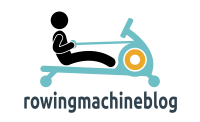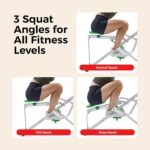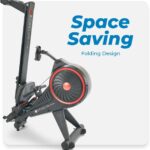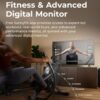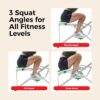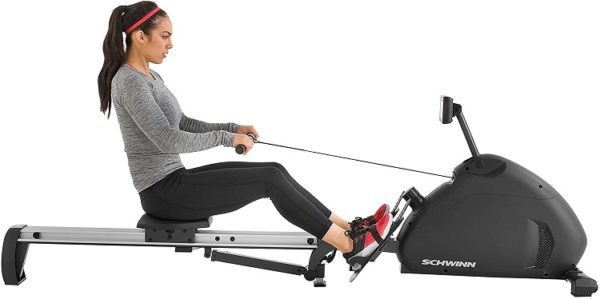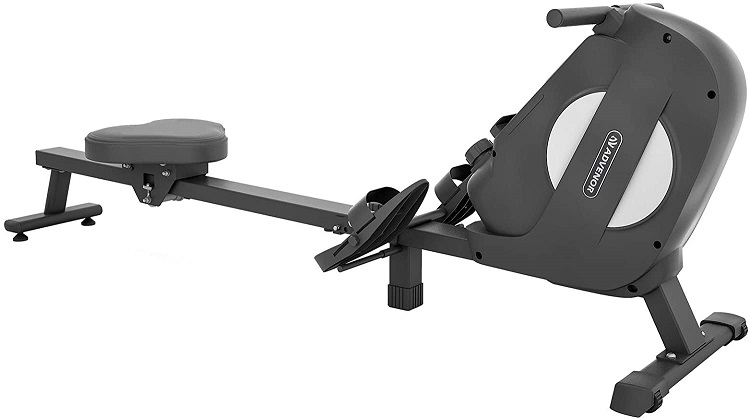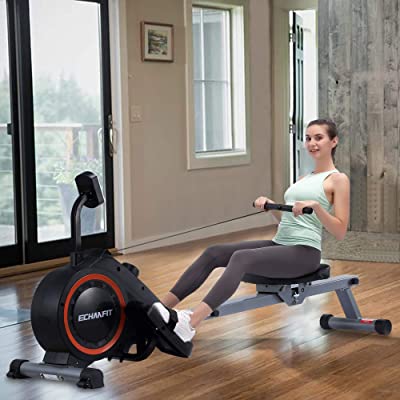Rowing Machine For Home Use
Are you curious whether a rowing machine can become the cornerstone of your home fitness routine?
Rowing Machine For Home Use
A rowing machine for home use can deliver a powerful, low-impact full-body workout from the comfort of your living space. You’ll get cardiovascular conditioning and strength benefits at the same time, making it a highly efficient option for busy schedules.
Why choose a rowing machine for home workouts?
You’ll save time by combining cardio and strength in one session, which is ideal when you have limited time. A rowing machine also tends to be compact and easier to store than many other pieces of fitness equipment, making it suitable for apartments and multi-use rooms.
Benefits of Rowing Machines
Rowing offers many advantages, both for fitness newcomers and experienced athletes. When you row regularly, you’ll likely notice improvements in endurance, muscular strength, and joint health.
Full-body workout
Rowing engages your legs, core, back, and arms, allowing you to work several major muscle groups in a single movement. You’ll benefit from both upper- and lower-body strength gains without needing separate equipment for each muscle group.
Low-impact cardiovascular training
Because rowing is a smooth, gliding motion, you’ll avoid many of the joint stresses associated with running or jumping. If you have joint concerns or are rehabbing from certain injuries, rowing can be an effective way to maintain aerobic fitness with less impact.
Efficient calorie burn
Rowing burns calories at a rate comparable to other vigorous cardio activities, and because it also stresses large muscle groups, your total energy expenditure can be substantial. If weight control or fat loss is a goal, a rowing machine can be an efficient tool.
Improves posture and core strength
The rowing stroke requires a stable core and strong back to move effectively, which means regular rowing can translate into better posture. You’ll strengthen the posterior chain and core stabilizers, which reduces the risk of lower-back pain when performed with good technique.
Time-efficient training
If you have only 20–40 minutes to exercise, rowing can give you a comprehensive session that includes aerobic conditioning and muscular endurance work. Short, intense sessions, like interval training on a rower, yield significant fitness benefits in limited time.

Types of Rowing Machines
There are several resistance systems used in rowing machines, and each type offers distinct feel, noise, maintenance, and cost characteristics. You’ll want to choose a type that matches your priorities for budget, noise level, and training goals.
Air resistance rowers
Air rowers use a flywheel and fan. The harder you row, the more resistance you generate, creating a natural, smooth feel. These machines tend to be noisy and are popular in gyms and among athletes who want the dynamic resistance.
Magnetic resistance rowers
Magnetic rowers use a magnetic brake system to create resistance independent of your stroke force. You’ll find they are quieter than air rowers and offer steady, adjustable resistance levels. They often require less maintenance and suit home environments where noise is a concern.
Water resistance rowers
Water rowers simulate the feel of on-water rowing by using paddles in a water tank. You’ll get a realistic, smooth stroke and a pleasant rushing-water sound. They can be heavier and require occasional water treatment but are aesthetically pleasing to many users.
Hydraulic piston rowers
Hydraulic rowers use pistons or cylinders for resistance and are typically compact and affordable. You’ll find them suitable for light use and small spaces, but they may not offer the same smoothness or durability for frequent, intense training.
Hybrid and other systems
Some rowers combine resistance types or use proprietary systems for a unique feel. You’ll find options designed to balance noise, cost, and stroke dynamics. Be ready to test these if possible so you can assess how the machine feels to you.
Muscles Worked and Biomechanics
When you row, you perform a coordinated sequence of movements that recruit multiple muscles. Understanding which muscles are involved will help you target weak links and refine technique.
Primary muscle groups
Rowing primarily uses the legs (quadriceps, hamstrings, glutes), the upper back (latissimus dorsi, rhomboids), and the posterior chain (erector spinae). During the drive phase, your legs provide most of the power, and then your back and arms finish the stroke.
Secondary muscle groups
You’ll also work your biceps, forearms, shoulders (deltoids), and core stabilizers. These muscles support the motion, control the handle, and maintain posture, contributing to both strength and endurance improvements.
The rowing stroke phases
A rowing stroke has four main phases: catch, drive, finish, and recovery. You’ll start at the catch with knees bent, push with your legs during the drive, complete power transfer with your back and arms at the finish, and then return smoothly to recovery. Proper sequencing reduces strain and increases efficiency.
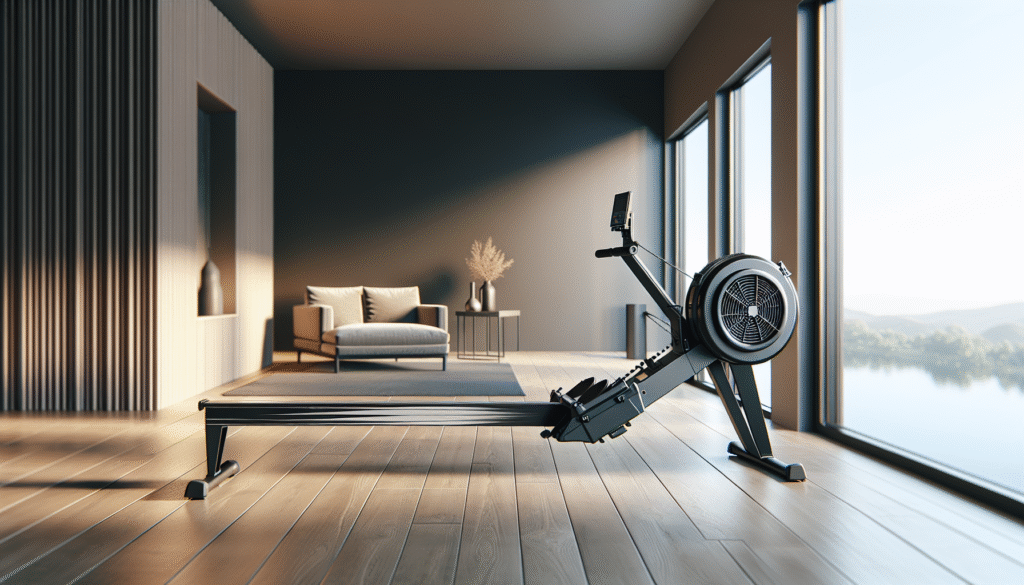
How to Choose the Right Rowing Machine
Selecting the best machine depends on your space, budget, training goals, and tolerance for noise. A thoughtful selection process helps you avoid buyer’s remorse and ensures long-term satisfaction.
Evaluate your space
Measure the area where you plan to place the rower, accounting for both length and clearance for the sliding motion. You’ll also want to consider vertical clearance if you have a low ceiling or plan to store the rower upright.
Determine your budget
Rowers range from budget-friendly piston models to premium water or commercial air machines. Think about how often you’ll train and whether you want a machine that will stand up to daily, intense sessions or occasional workouts.
Consider noise and household tolerance
If you live with others or in an apartment, the noise profile matters. Magnetic and water rowers are typically quieter, while air rowers produce the most sound. You’ll want a balance between realism of feel and acceptable noise.
Think about features and training tools
Features like a performance monitor, Bluetooth/ANT+ connectivity, preset workouts, and seat comfort can influence your experience. If you plan to use virtual training apps or track detailed metrics, prioritize models with robust electronics.
Check durability and warranty
Look for a strong frame, quality rail and seat components, and a reputation for durability. A clear warranty on frame and parts will give you peace of mind. You’ll generally pay more for better build quality, which can be worthwhile if you’ll use the rower frequently.
Test before you buy (if possible)
If you can, test models in a store or gym to assess the stroke feel and seat comfort. You’ll quickly notice differences in resistance smoothness and ergonomics. If you can’t test in person, read multiple user reviews and watch videos from trusted reviewers.
Buying Comparison Table
This table gives a quick overview of the common resistance types and how they stack up across common decision factors. You’ll use this to quickly narrow choices based on what matters most to you.
| Resistance Type | Feel/Realism | Noise Level | Maintenance | Price Range | Best For |
|---|---|---|---|---|---|
| Air | Dynamic, realistic | Loud | Moderate | Mid to high | Athletes, performance training |
| Magnetic | Smooth, consistent | Quiet | Low | Low to mid | Apartments, quiet homes |
| Water | Very realistic, pleasant sound | Moderate | Moderate (water care) | Mid to high | Aesthetics, realistic feel |
| Hydraulic | Short stroke, compact | Quiet | Low | Low | Small spaces, budget buyers |
| Hybrid | Varies | Varies | Varies | Mid to high | Balanced needs |
Setting Up Your Rowing Machine at Home
Proper setup ensures you’ll get the best ergonomics, performance, and safety from your rower. You’ll also save time and avoid issues caused by incorrect placement.
Placement and floor protection
Place the rower on a flat, stable surface and consider a mat to protect floors and reduce noise. You’ll also protect the equipment from dust and provide a more stable base, especially on hardwood or tile.
Assembly tips
Follow the manufacturer’s instructions carefully and keep the provided tools handy. You’ll want to check bolt tightness periodically after initial use and ensure moving parts are lubricated if recommended.
Adjusting foot straps and monitor
Set foot straps snugly over the ball of your foot to stabilize contact and prevent slipping. Position the monitor so you can read it without breaking your posture; you’ll be more motivated when data is clearly visible.
Storage and portability
If you need to store the rower upright or on its side, confirm the model supports that configuration. You’ll want to ensure it’s stable when stored and that any detachable components are secured to prevent damage.
Proper Rowing Technique
Technique matters more than sheer effort. With correct form you’ll increase efficiency, reduce injury risk, and make steady progress.
The correct sequence: legs, hips, arms
You’ll generate power first with the legs, then open your hips to involve the back, and finally pull with your arms. Reverse that sequence on the recovery phase: arms, hips, then legs to return to the catch position.
Posture and spinal alignment
Keep a neutral spine with a slight forward lean at the hips during the catch. You’ll avoid rounding your lower back and reduce the risk of strain by maintaining a long, stable core.
Handle height and grip
Hold the handle lightly and maintain relaxed shoulders throughout the stroke. You’ll waste energy and risk forearm fatigue if you grip too tightly or tense your neck and shoulders.
Stroke rate and power per stroke
You’ll balance stroke rate (strokes per minute) with power per stroke. Higher rates are appropriate for short intervals, while lower rates with strong, controlled drives are better for endurance sessions.
Sample Workouts for Home Rowing
A diverse mix of workouts keeps you motivated and helps you build endurance, power, and speed. Each sample includes time, intensity suggestions, and progression tips.
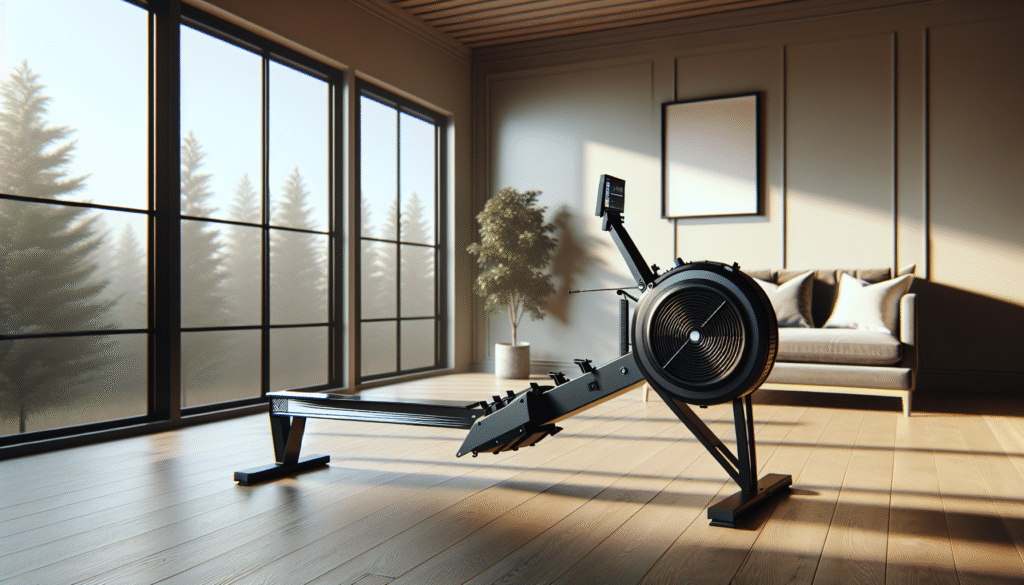
Beginner workout: steady technique session
- Warm-up: 5 minutes easy rowing at low intensity to get the blood flowing and rehearse technique.
- Main set: 3 x 6 minutes at conversational pace with 2 minutes easy recovery between pieces.
- Cool-down: 5 minutes light rowing and mobility for hips and shoulders.
You’ll use this session to build a base and prioritize smooth, efficient strokes rather than speed.
Intermediate workout: interval training
- Warm-up: 10 minutes progressive rowing, increasing intensity slowly.
- Main set: 6 x 3 minutes at moderately hard effort (about 80% perceived), with 90 seconds easy between intervals.
- Cool-down: 10 minutes of easy rowing and stretching.
You’ll use intervals like this to boost VO2 max and raise your sustainable intensity.
Advanced workout: power and sprint
- Warm-up: 15 minutes including technique drills (legs-only, arms-only, half-slide).
- Main set: 10 rounds of 30-second all-out sprints with 90 seconds easy recovery.
- Cool-down: 10 to 15 minutes easy rowing and mobility work.
You’ll do these workouts occasionally to improve peak power and sprint capacity, but allow recovery between intense sessions.
Long endurance session
- Warm-up: 10 minutes easy with a few short pick-ups.
- Main set: 45–60 minutes steady rowing at a maintainable pace where you can still speak in short sentences.
- Cool-down: 10 minutes easy and mobility work.
You’ll build aerobic base and muscular endurance with long, steady sessions like this.
Sample Workout Table
This table summarizes simple session structures for quick reference so you can pick workouts based on time and goals.
| Goal | Duration | Structure | Intensity |
|---|---|---|---|
| Technique/base | 30–40 min | Warm-up + steady pieces + cool-down | Easy to moderate |
| Intervals/cardio | 30 min | Warm-up + 6–8 intervals + cool-down | Moderate to hard |
| Sprint/power | 30–40 min | Short warm-up + sprints + recovery | Very hard |
| Endurance | 60 min | Long steady-state | Moderate |
Tracking Progress and Metrics
To stay motivated and measure improvement, you’ll want to track metrics like distance, stroke rate, split time, and power. Many modern rowers and apps provide metrics that make progress tangible.
Key metrics explained
Split time (time to row 500 meters) helps you gauge pace and progress. Stroke rate tells you how many strokes you take per minute, and power (watts) reflects output when rower electronics compute it.
Using heart rate and perceived exertion
Pairing heart rate with perceived exertion ensures you’re training at the right intensity. You’ll use heart rate zones to structure long sessions, intervals, and recovery periods effectively.
Apps and connectivity
Many rowers link to apps or third-party platforms for guided workouts, virtual competition, and data logging. You’ll benefit from structured programs and community motivation if you respond well to guided sessions.
Maintenance and Care
Regular maintenance extends the lifespan of your machine and ensures a smooth rowing experience. You’ll want to establish a routine for cleaning and small checks.
Daily and weekly tasks
Wipe down the monitor and handle after use to remove sweat and grime. You’ll also inspect the chain or strap weekly for wear and lubricate the chain if required by the manufacturer.
Monthly and annual tasks
Check bolts and fittings monthly to ensure nothing has loosened. You’ll want to service the resistance mechanism according to the manual and replace worn foot straps, seats, or rollers as needed.
Troubleshooting common issues
If the monitor isn’t working, check batteries, connections, and firmware updates. You’ll address squeaks by cleaning the rail and ensuring the seat rollers are free of debris, and if resistance feels off, consult the manual for calibration steps.
Safety and Injury Prevention
Rowing safely is about technique, sensible progression, and listening to your body. You’ll reduce injury risk with consistent habits and correct form.
Warm-up and mobility
Always begin a session with a general warm-up followed by dynamic mobility for hips, hamstrings, and shoulders. You’ll notice better performance and reduced soreness when you prepare your body before intense work.
Avoiding common mistakes
Don’t lead with your back or overreach at the catch; you’ll risk lower-back strain. Also avoid excessive tension in the arms and shoulders; instead, keep your grip light and use your legs for the majority of the pull.
Progressive overload and recovery
Increase training volume and intensity gradually to avoid overuse injuries. You’ll benefit from rest days, proper sleep, and cross-training to give your body time to recover.
Accessories and Add-Ons
A few accessories can improve comfort, tracking, and the overall home setup. You’ll choose extras based on budget and needs.
Seat cushions and grip tape
If the seat feels hard during long rows, a thin seat cushion can improve comfort. You’ll also find grip tape or gloves helpful if you develop blisters or hand discomfort.
Monitor mounts and tablets
Mounts for tablets help you follow virtual classes and apps on a safe, stable platform. You’ll gain a richer training experience when you can watch guidance or metrics at eye level.
Mat and floor protection
A mat improves stability, protects floors, and reduces noise transmitted to the ground. You’ll likely find it worthwhile, especially on hardwood or thin floors.
Heart rate straps and sensors
A chest strap or compatible wrist sensor provides more accurate heart rate readings than many basic monitors. You’ll use accurate heart rate to better structure training intensity and recovery pacing.
Cost Considerations and Budgeting
Rowers vary from affordable beginner options to high-end models. You’ll match your budget to your expected usage and desired features.
Entry-level price range
Hydraulic and basic magnetic rowers are often the most affordable and can be good for casual fitness. You’ll get functionality at a lower cost but may sacrifice smoothness and longevity.
Mid-range options
Air and higher-quality magnetic or water rowers occupy the mid-range and offer better resistance profiles, build quality, and electronics. You’ll find the best value here if you plan regular training.
Premium and commercial-grade
Commercial or premium water and air rowers are built to withstand heavy use and often have robust monitors and connectivity. You’ll pay more but gain durability and performance if you’re a serious rower.
Comparing Rowing to Other Cardio
Rowing compares favorably to running, cycling, and elliptical machines depending on what you want from your workout. You’ll choose based on goals, joint health, and time efficiency.
Advantages over running
Rowing is lower impact and engages the upper body more than running. You’ll reduce joint loading while still getting a strong cardiovascular and muscular stimulus.
Comparing to cycling
Cycling targets lower-body endurance but involves less upper-body engagement. You’ll pick rowing if you want a full-body session, and cycling if you prefer seated lower-body training.
Versus the elliptical
Ellipticals offer low-impact movement mostly focused on the lower body. You’ll find rowing more effective for balancing upper- and lower-body development and for core engagement.
Storing, Moving, and Space-Saving Tips
If space is tight, solutions exist to keep a rower without sacrificing precious room. You’ll want to consider foldable or upright-storing models.
Upright storage
Many models support upright storage; you’ll make sure the manufacturer approves this to avoid damage. Upright storage can save a significant footprint in your home.
Foldability and compact models
Some rowers are designed specifically for small spaces and fold or disassemble easily. You’ll pay attention to reassembly time and how sturdy the rower feels when put back together.
Shared spaces and noise management
If you share living space, consider the noise impact and use a mat to dampen sound. You’ll also plan workout times that are considerate of neighbors or family.
Common Questions (FAQs)
Answering frequent concerns helps you make smart choices and get started with confidence. You’ll find practical advice and quick answers below.
Can rowing help with weight loss?
Yes, rowing can be an effective tool for weight management when paired with a sensible diet. You’ll burn calories efficiently because rowing combines large muscle groups with cardiovascular demand.
How often should I row per week?
Begin with 3 sessions per week if you’re new, and build up to 4–6 sessions depending on goals and recovery. You’ll balance intensity so you don’t burn out or risk injury.
Is rowing bad for your back?
Rowing is not inherently bad for the back if performed with correct technique. You’ll protect your lower back by keeping a neutral spine, using your legs for power, and avoiding premature spinal bending.
Can you build muscle with a rower?
Yes, rowing builds muscular endurance and contributes to hypertrophy when you include higher resistance and progressive overload. You’ll combine rowing with strength training for maximal muscle-building effects.
Final Thoughts and Getting Started
A rowing machine for home use is a versatile, efficient option that suits many goals from weight loss to endurance to strength. You’ll gain a lot from consistent practice, focus on technique, and sensible progression.
If you’re unsure where to start, pick a simple routine: three 30-minute sessions per week, alternating easy and moderate intensity, and gradually increase either duration or intensity. You’ll avoid injury and build a habit that makes the rowing machine a rewarding part of your home fitness setup.
Remember to test machines when possible, protect your floor and ears, and keep technique a priority. With that approach, you’ll maximize the benefits and enjoy a satisfying, effective home workout.
